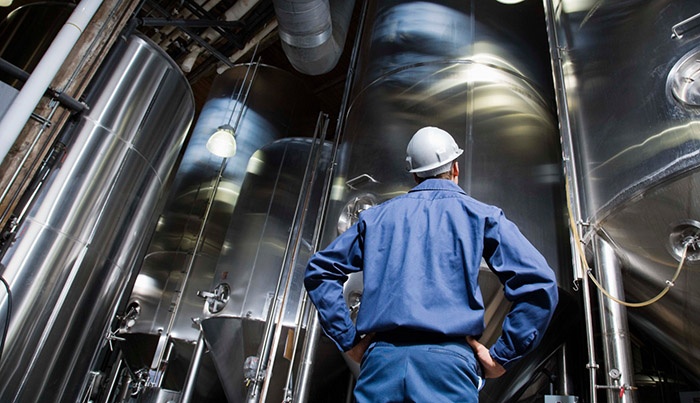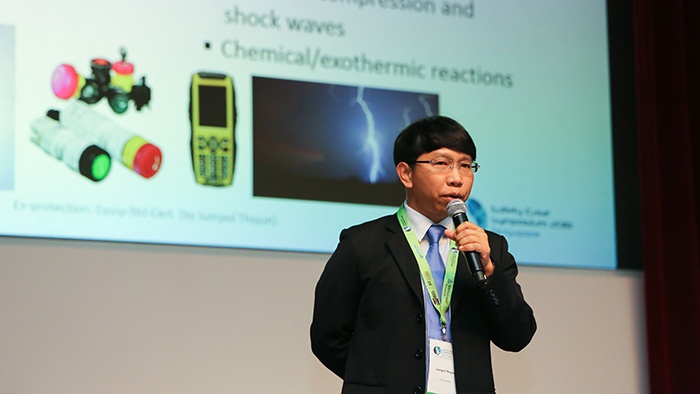Explosion Protection in Safety Case
Within many process industries, there are lots of flammable or combustible substances produced, used, and stored, creating hazardous areas with a risk of fire and/or explosion. In some countries, such hazardous plants are required to produce a Safety Case, and having a structured approach on Explosion Protection could provide a great help in the preparation, from identification, selection of equipment, and operations.

For international application, The hazardous areas can be classified according to other standards than IEC 60079-10 (e.g. NFPA 70, EI 15/ IP 15, CEC standards, AS standards, etc.), based upon the frequency and duration of occurrence of flammable gas or dust respectively, so that to facilitate the proper selection, installation and operation of equipment. The classification is:
- Zone 0 / Zone 20
- Zone 1/ Zone 21
- Zone 2 / Zone 22
The plant designers and operators also need to eliminate and control any possible ignition sources within acceptable safety levels. Some example of possible ignition sources are hot surface, flame and hot gas, mechanical generated spark, electrical equipment, static electricity, lightning strike, as described in the EN 1127-1 standard.
IECEx and ATEX, the safety standard for ‘Ex Equipment’
When there is requirement to install and use of electrical, control, instrumentation and non-electrical (mechanical) equipment —generally called ‘Ex equipment’— within hazardous areas, the design engineers are normally required to use equipment in compliance with national or international standards to ensure the safety of their workplaces and staff, as well as to meet the regulation for safety and insurance policy.
There are many schemes for conformity assessment to Ex equipment varied from local mandatory within each countries up to regional and international schemes. Two main recognized schemes for conformity assessment to the Ex equipment are European ATEX Directive 2014/34/EU and IECEx equipment certification scheme.
The Ex equipment and Ex component are required to pass the tests and verification by Notified Body (ExNB) for ATEX directive or by Certification Body (ExCB) for IECEx scheme, which reference to applicable EN or IEC standards, respectively, depended on the designed Types of protection. Not only for product testing, the manufacturing facilities of Ex equipment are also required the quality system audit for certification and maintaining the quality of production and final inspection process of the equipment.
For selection of Ex equipment, there are several types of protection or explosion protection techniques applied to equipment which difference by the Equipment Category or Explosion Protection Level (EPL) and acceptance for use in different zone areas. For example (with reference to IEC 60079-14):
- flameproof (Ex d) equipment EPL- Gb is allowed for use in Zone 1 and 2
- intrinsically safety (Ex ia) equipment EPL-Ga is allowed for Zone 0, 1 and 2
- non-sparking (Ex nA) equipment EPL-Gc is only allowed for Zone 2 area
Other applicable standards for design, verification and tests the Ex-equipment according to ATEX or IECEx can be referred to EN or IEC 60079 series for electrical equipment and ISO 80079 series for non-electrical equipment.

 This is a summary of presentation by Jumpol Thojun, Electrical Engineering Manager (Explosion Protection Services), during the Safety Case Symposium 2018 in Singapore.
This is a summary of presentation by Jumpol Thojun, Electrical Engineering Manager (Explosion Protection Services), during the Safety Case Symposium 2018 in Singapore.
What's next?
- View the presentation slides here.
- For more information about the Safety Case Symposium, please email contact@safetycasesymposium.com
- See what TÜV Rheinland can offer for Explosion Protection here.


